Secret 1: Pre-Flight Preparation Hacks
The first secret to transforming your airplane travel experience happens before you even step foot in the airport. Proper pre-flight preparation eliminates much of the stress and uncertainty that makes air travel challenging. By implementing these strategic preparation hacks, you’ll set yourself up for a smoother journey from start to finish.
Real-Time Flight Intelligence
One of the most stressful aspects of flying is uncertainty about your flight status. Is it on time? Has the gate changed? Download FlightAware or a similar flight tracking app to get real-time updates about your flight. These apps provide more detailed and often more up-to-date information than what is displayed on airport screens.
“I never travel without checking FlightAware first. It’s saved me countless hours of waiting at the gate by alerting me to delays before the airline even announces them.” — Frequent international traveler.
Beyond just tracking your specific flight, these apps can show you the actual aircraft’s location and previous journey. This provides insight into whether your plane is likely to arrive on time for your departure—information that airlines typically don’t share proactively.
Strategic Packing Techniques
The way you pack can dramatically impact your travel experience. Compression packing cubes are a game-changer for maximizing space while keeping your belongings organized. And accessible. These simple fabric containers enable you to compress your clothing down to a fraction of its standard size, keeping everything neatly organized and categorized.
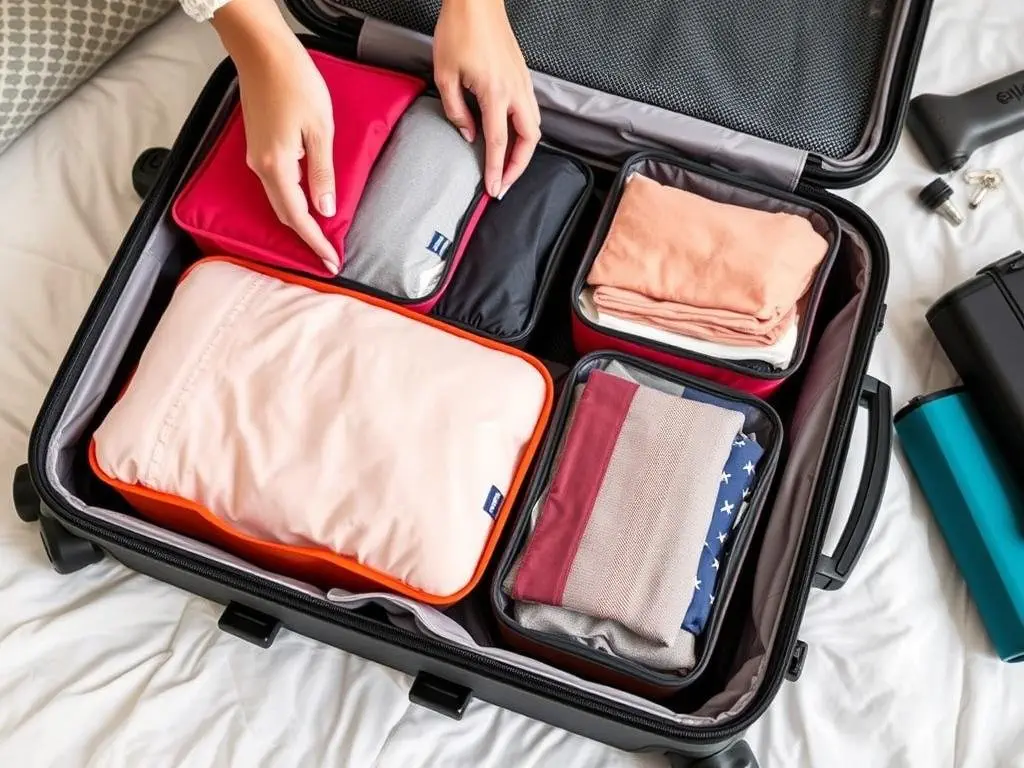
For toiletries, think beyond the standard plastic bag. Consider these TSA-approved hacks:
- Use solid toiletries (shampoo bars, solid deodorant, toothpaste tablets) that don’t count toward your liquid allowance
- Pre-cut small squares of paper soap sheets instead of liquid soap
- Purchase toiletries after security if you’re not checking a bag
- Use contact lens cases for small amounts of creams and lotions
- Pack an empty water bottle to fill after security
Remember that the TSA allows liquids in containers of 3.4 ounces (100ml) or less, all of which fit within a single quart-sized clear bag. Being strategic about what goes in this precious space can make a big difference.
Seat Selection Strategy
Not all airplane seats are created equal, even within the same class of service. Using SeatGuru before selecting your seat can help you avoid unpleasant surprises, such as seats that don’t recline, have limited legroom, or are located near high-traffic areas like bathrooms.
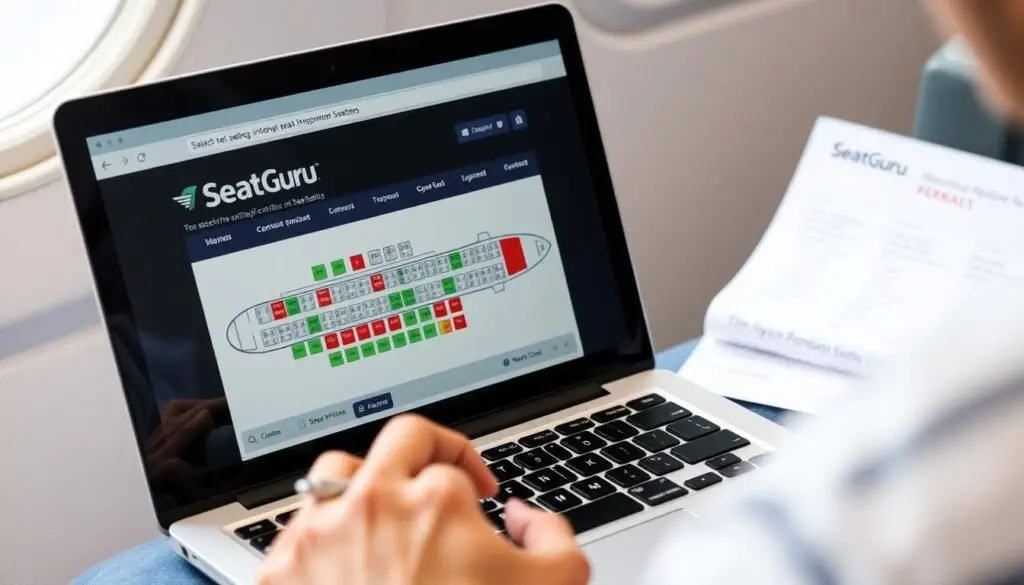
When using SeatGuru, look for these key factors:
What to Look For:
- Seats with extra legroom
- Power outlet availability
- Distance from the lavatories
- Window alignment (some “window seats” have misaligned windows)
What to Avoid:
- Seats that don’t recline
- Seats near galleys (noisy during service)
- Bulkhead seats, if you need under-seat storage
- Exit row seats if you want armrest entertainment
For long flights, consider selecting a seat on the left side of the plane if you’re right-handed (or vice versa). This positions the wall on your dominant side, giving you more elbow room when the person next to you is occupying the shared armrest.
Ready to take control of your seat selection?
Visit SeatGuru now to check the best seats for your upcoming flight.
Secret 2: In-Flight Comfort Strategies

Once you’re on the plane, a whole new set of challenges arises. The second secret focuses on maximizing your comfort during the flight itself. With the right strategies, even a long-haul journey in economy class can be surprisingly comfortable.
Audio Environment Management
The constant drone of engines, crying babies, and chatty neighbors can make relaxation nearly impossible. Taking control of your audio environment is essential for a peaceful flight.
Noise-Canceling Headphones
- Actively cancel ambient noise
- Provide superior audio quality
- Comfortable for extended wear
- Can be used with or without audio
- Many have Bluetooth connectivity
Quality Earplugs
- More affordable option
- Extremely portable
- No batteries required
- Can be more comfortable for side-sleepers
- Won’t interfere with head position
For the ultimate in noise reduction, consider using both: wear earplugs and place noise-canceling headphones over them. This combination creates a tranquil environment that can help you sleep even on noisy flights.
In-Flight Stretching Routine
Sitting in one position for hours isn’t just uncomfortable—it can be harmful to your circulation. A simple stretching routine can make a significant difference in how you feel both during and after your flight.
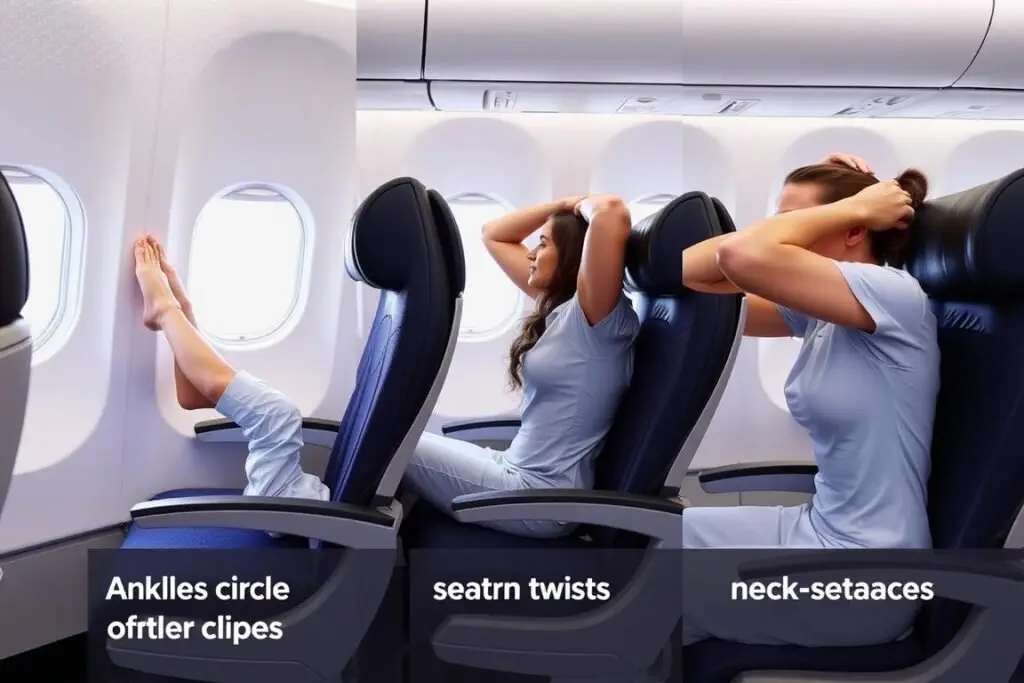
Try these three simple exercises every hour during your flight:
- Ankle Circles: Lift your feet slightly off the floor and rotate each ankle in circles, 10 times clockwise and 10 times counterclockwise. This improves circulation in your lower legs.
- Seated Spinal Twist: Sit up straight, place your right hand on your left knee, and gently twist your torso to the left, looking over your left shoulder. Hold for 10 seconds, then repeat on the other side. This relieves back tension.
- Shoulder Rolls: Roll your shoulders forward 10 times, then backward 10 times. This releases tension in your upper back and shoulders, areas that often become stiff during flights.
When possible, get up and walk the aisle every 1-2 hours. Even a brief walk helps stimulate circulation and prevent stiffness. Time these walks strategically to avoid meal service and times when the seatbelt sign is likely to be on.
Hydration and Nutrition Strategy
The low humidity in airplane cabins (often below 20%) can quickly lead to dehydration, which worsens jet lag and contributes to that general feeling of unwellness after flying. A strategic approach to hydration and nutrition can make a dramatic difference.
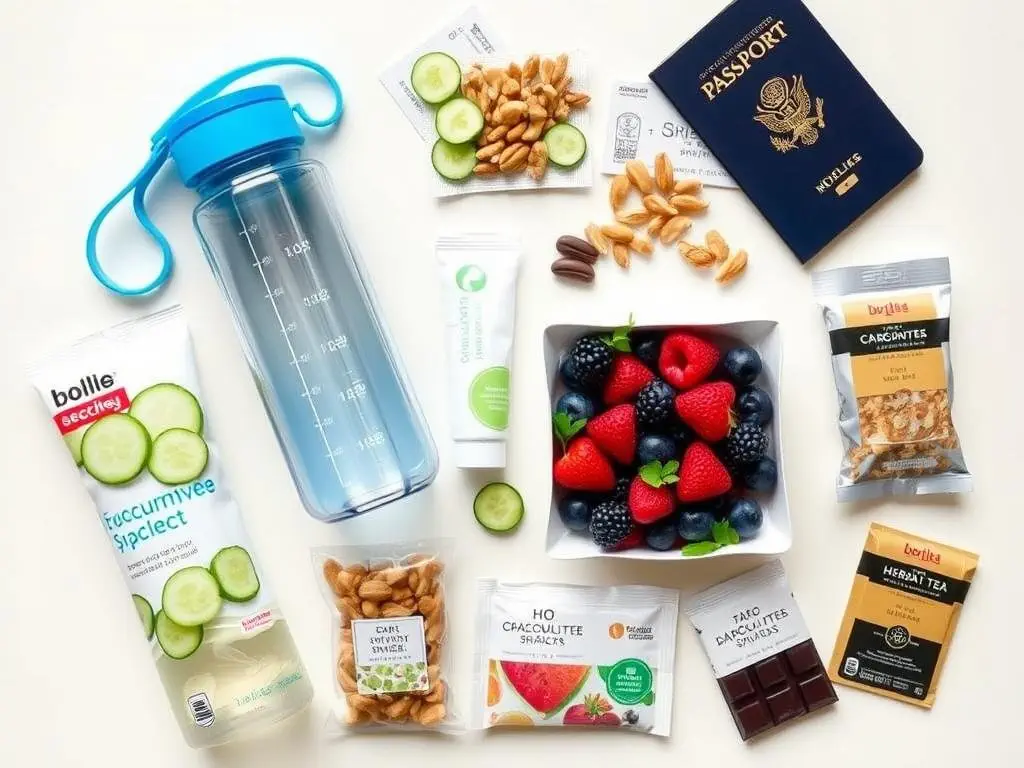
For optimal hydration:
- Drink 8oz of water for every hour of flight time
- Bring an empty reusable water bottle to fill after security
- Consider adding electrolyte tablets to your water for better hydration
- Limit alcohol and caffeine, which can worsen dehydration
- Apply a hydrating facial mist occasionally to combat skin dryness
To avoid bloating and digestive discomfort, be selective about what you eat before and during your flight:
| Foods to Enjoy | Foods to Avoid | Why It Matters |
| Bananas, blueberries | Carbonated drinks | Gas expands at altitude, increasing bloating |
| Nuts, dark chocolate | Salty snacks | Salt promotes water retention and bloating |
| Yogurt, kefir | Heavy, fatty meals | Harder to digest when sedentary |
| Cucumber, celery | Beans, cruciferous vegetables | Can cause gas and discomfort |
| Ginger tea, peppermint tea | Alcohol, excessive caffeine | Dehydrates and disrupts sleep |
Consider packing your on-the-go snack kit with items like nuts, dried fruit, dark chocolate, and herbal tea bags. This provides healthy options, regardless of what’s served on board, and helps you maintain stable blood sugar levels throughout your journey.
Pro Tip: Pack an empty insulated water bottle in your carry-on. After security, fill it with ice (which is allowed through security even when water isn’t) and top with water from a fountain. The ice will melt slowly, giving you cold water throughout your flight.
Secret 3: Post-Flight Recovery Tricks

Even with perfect preparation and in-flight strategies, long flights—especially those crossing multiple time zones—can leave you feeling drained. The third secret focuses on rapid recovery techniques that help you bounce back quickly and make the most of your time at your destination.
Strategic Light Exposure for Jet Lag
Jet lag occurs when your body’s internal clock, known as the circadian rhythm, is out of sync with the local time at your destination. The most powerful way to reset this clock is through strategic exposure to light and darkness.
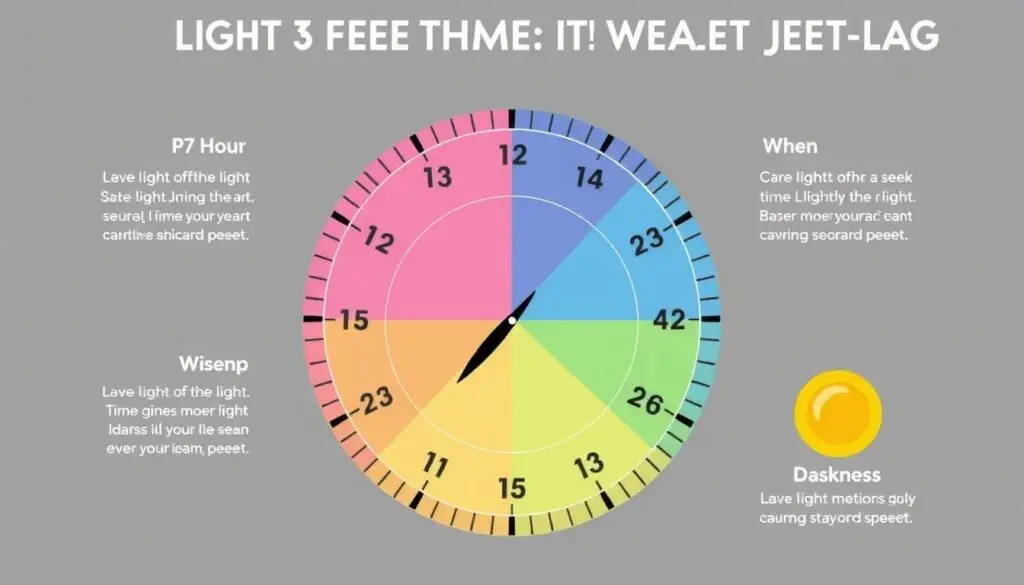
Here’s how to use light exposure strategically:
When Traveling East:
- Seek morning light at your destination
- Avoid evening light
- Take melatonin 30 minutes before local bedtime
- Wear blue-light blocking glasses in the evening
When Traveling West:
- Seek evening light at your destination
- Avoid morning light (wear sunglasses)
- Take melatonin only if waking too early
- Stay active until local bedtime
The timing of melatonin supplementation is crucial. For eastward travel, take 0.5-3mg about 30 minutes before your target bedtime at your destination. For westward travel, melatonin is typically only needed if you find yourself waking too early in the morning.
“The single most effective strategy I’ve found for beating jet lag is getting 15-30 minutes of bright natural light immediately upon waking at my destination. It’s more effective than any pill or supplement.” — Dr. Michael Breus, Clinical Psychologist and Sleep Specialist.
Luggage Retrieval Optimization
After a long flight, the last thing you want is to spend extra time at the baggage claim trying to identify your luggage among dozens of similar bags. A few simple strategies can significantly accelerate this process.
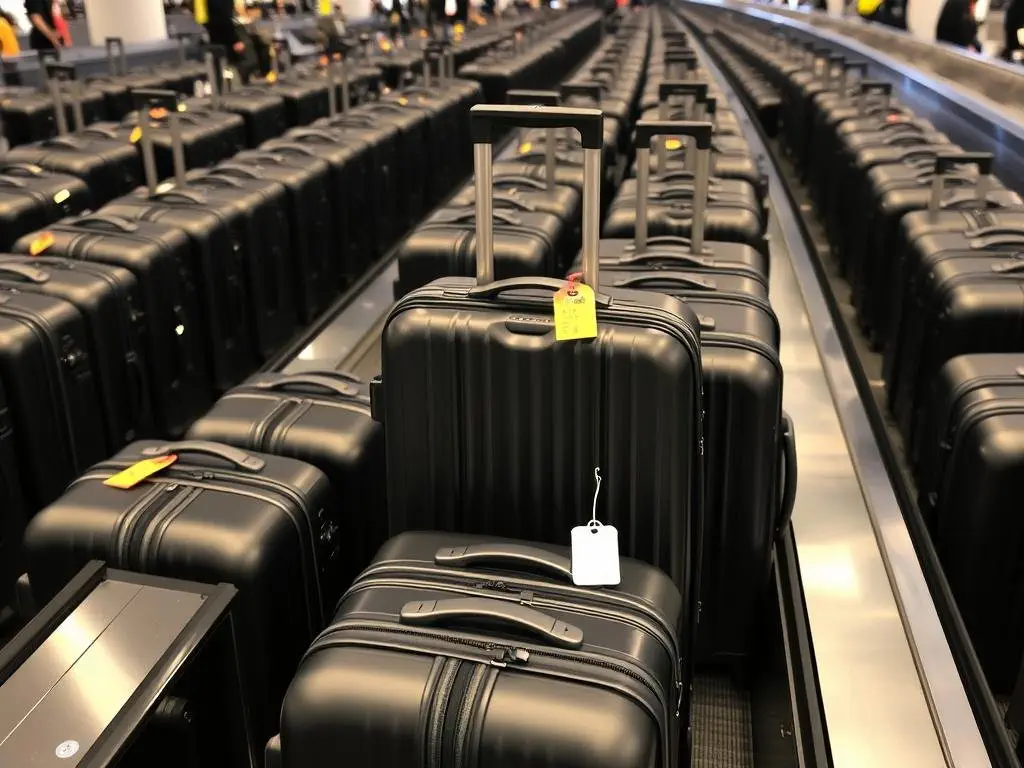
Try these luggage retrieval strategies:
- Choose distinctive luggage in bright colors or patterns
- Add large, colorful luggage tags or ribbons to standard black bags
- Use a GPS tracker (like Apple AirTag or Tile) in each checked bag
- Please take a photo of your luggage before checking it
- Place a copy of your itinerary inside each bag in case the external tag is lost
If you frequently travel to the same destination, research which baggage carousel typically serves flights from your city of origin. At many airports, this is consistent, and knowing in advance can save you time wandering between carousels.
Time-Saving Tip: If you checked multiple bags, position yourself in the middle of the carousel rather than at the beginning, where most people gather. This gives you visibility of more bags and reduces competition when grabbing your luggage.
Post-Flight Skincare Routine
The dry cabin air can leave your skin dehydrated, dull, and more prone to breakouts. A targeted post-flight skincare routine can quickly restore your skin’s health and appearance.

Follow this simple routine after landing:
- Gentle Cleansing: Use a mild, non-foaming cleanser to remove accumulated dirt and oil without stripping your skin.
- Hydrating Mask: Apply a sheet mask or a 5-minute hydrating mask to replenish moisture quickly. Look for ingredients like hyaluronic acid, glycerin, and aloe vera.
- Targeted Serum: Apply a vitamin C or niacinamide serum to brighten dullness and strengthen your skin barrier.
- Rich Moisturizer: Seal in hydration with a richer moisturizer than you might typically use.
- Eye Treatment: Address puffiness and dark circles with a cooling eye gel or patch.
Pack these items in travel sizes in your carry-on so you can perform an abbreviated version of this routine in the airplane bathroom shortly before landing. This gives your skin a head start on recovery.
“The post-flight skincare routine is as important as what you do during the flight. Your skin loses significant moisture at altitude, and it needs immediate replenishment once you land.” — Celebrity esthetician Joanna Vargas.
Don’t forget to continue drinking plenty of water after your flight. Internal hydration is just as important as topical treatments for restoring your skin’s appearance and health.
Want to arrive looking refreshed?
Try this travel-friendly skincare set, which includes everything you need for post-flight recovery.
Transform Your Journey Starting Today

Air travel doesn’t have to be something you merely endure. By implementing these three secrets—strategic pre-flight preparation, in-flight comfort techniques, and post-flight recovery methods—you can transform your entire travel experience.
Remember that the key to success is in the details. Download flight tracking apps before your next trip. Invest in quality compression packing cubes and noise-canceling headphones. Research your seat options on SeatGuru. Pack healthy snacks and an empty water bottle. Prepare your post-flight skincare kit. Each small action contributes to a dramatically improved travel experience.
The beauty of these strategies is that they work regardless of whether you’re flying economy or first class. While you can’t control flight delays or turbulence, you can control how prepared and comfortable you are throughout your journey.
What travel hack has made the most significant difference in your flying experience? Have you tried any of the strategies mentioned in this article? Share your favorite airplane travel tip in the comments below—your insight might be precisely what another traveler needs to hear!
Ready to transform your next flight?
Share your favorite travel hack in the comments and help fellow travelers!
What’s the most important thing to pack for a comfortable flight?
While preferences vary, noise-canceling headphones or quality earplugs consistently rank as the most impactful items for improving flight comfort. They create a peaceful environment that makes everything from sleeping to watching movies more enjoyable. A close second would be a reusable water bottle to maintain hydration throughout your journey.
How early should I arrive at the airport?
For domestic flights, please arrive at least 2 hours before departure. For international flights, a minimum of 3 hours is recommended. However, these times should be adjusted based on the airport size, time of day, and whether you’ve checked in online. Smaller airports during off-peak hours may require less time, while major hubs during holidays will need more.
What’s the best way to sleep on a plane?
Choose a window seat so you can lean against the wall for added comfort. Wear noise-canceling headphones or earplugs to block sound. Use a neck pillow worn backward (with the opening at the back of your neck) for better support. Avoid alcohol, but consider a small dose of melatonin if appropriate for your flight time. Lastly, wear an eye mask to block out light cues that might keep you awake.



